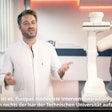What does value-based radiology mean and how can it be achieved in practice? European Society of Radiology (ESR) President Prof. Carlo Catalano addressed this burning question during a special session at France's national radiology congress, JFR 2023.
Speaking in Paris on 14 October, he said more research was necessary to measure and demonstrate direct influence on patient outcomes. Also, more audits of outcomes and technical measures of success were vital, as were the formation of registries.
"Value-based radiology is a conceptual means of looking at the benefits for patients and the healthcare system as a whole," noted Catalano, who is professor and chair of radiology at Sapienza University of Rome. "It will become increasingly important in the future as a means of determining resources."
He said that the following five aspects are essential to enhance the value delivered by radiology:
- Referral information/electronic medical records
- Justification, decision support, and protocols
- Direct communication with patients and referrers
- Patient information resources
- Imaging data sharing and protection.
To improve the process, it's important to concentrate on countering commoditization ("key performance indicators indicating quality, not just numbers"), peer review (with necessary legal protections and supports), AI, and integrated diagnostics.
The example of interventional radiology
Interventional radiology (IR) lends itself particularly well to direct assessment of value contribution, according to Catalano.
"In demonstrating value in terms of costs, IR may seem to be easy because it is minimally invasive, with faster recovery times and return to work, decreased costs, and increased patient throughput," he noted. "IR is also ideally suited to ambulatory care and can help in outpatient clinics by leading to more day case procedures and bringing value to other clinicians and hospital management."
One of the main challenges to overcome, however, is the shortage of interventional radiologists. Also, better education and training is the key to future success.
Catalano supports the use of the ESR European Training Curriculum available here and the Cardiovascular and Interventional Radiology Society of Europe (CIRSE) curricula available on the CIRSE website.
The third edition of the European Curriculum and Syllabus for IR has recently been published, and it will serve as the basis for the European Board of Interventional Radiology (EBIR) examination from March 2024, he explained. In the meantime, the second edition will remain the basis for the exam. Greek and Spanish versions of the second edition of the curriculum are available.
Catalano recommended attending the Cube at ECR 2024, which offers practical, hands-on training for students, residents, radiologists, and anyone keen to learn about IR. Participants can work with devices and simulators and gain experience under the guidance of tutors and attend CME-accredited sessions comprising short introductory and educational lectures by experts.
Also, the European School of Radiology (ESOR) has awarded 45 scholarship/fellowship grants in IR since 2007. He encouraged applications for the ESOR Visiting Scholarship Programme Europe 2024 (14 topics, including IR). The scheme is due to start in early February 2024.
ESOR Foundation Courses on IR have been held online since 2021. The last ESOR Foundation Course on IR on 23 May 2023 attracted 189 live viewers. The next course will take place on 29 May 2024.
Research seed grants from the ESR/European Institute for Biomedical Imaging Research (EIBIR) are also having an impact, according to Catalano. Two project cycles were completed successfully in 2020 and 2022. The main aim is to stimulate and provide funding for innovative one-year projects and pilot studies that will lead to larger studies and further funding applications.



















